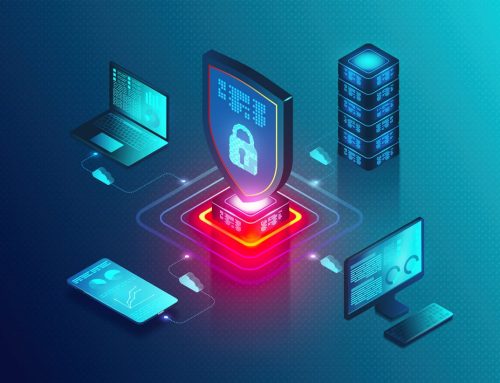In the realm of exam security, the prevalence of smartphones and electronic devices has skyrocketed. Whether it’s the SATs or professional exams, the ease of access to these devices has made cheating more tempting than ever before. Educational institutions are under pressure to strengthen their security and implement robust measures to preserve the sanctity of exams and assessments.
With cheating methods constantly evolving, traditional exam security measures are falling short. This highlights the urgent need for proactive strategies to identify and prevent the use of unauthorized devices. In this dynamic environment, prioritizing innovative solutions to combat cheating is essential to maintaining the integrity and fairness of the examination process.
The Increasing Need for Exam Security
The increasing need for exam security is a direct response to the changing environment of education, particularly in the digital age. Examinations are an important part in assessing students’ knowledge, skills, and academic achievement. Test results often carry significant consequences, such as admission to educational programs, certification for professional licenses, and eligibility for scholarships or employment opportunities. Ensuring the fairness and reliability of exams is essential to uphold the value and credibility of these results.
With advancements in technology, accessibility of information, and online learning platforms, the security of exams has become more vulnerable to forms of cheating and academic dishonesty. Online exams offer convenience but also present challenges, as it’s easier for students to cheat by accessing unauthorized materials or collaborating with others.
Even with in-person exams, proctors and educators face challenges with smartphones and other devices that can help students cheat, contributing to the increasing need for exam security solutions.
Challenges in Maintaining Exam Security

Maintaining exam security presents several challenges in the modern educational landscape. These challenges come from technological advancements, online learning, and the creative methods students have developed to cheat.
Online proctoring
Online proctoring, while offering a solution for remote monitoring of exams, presents challenges related to its effectiveness and reliability. Proctors may encounter difficulties in adequately supervising multiple students, especially in large-scale online exams. The reliance on internet connectivity and webcam functionality can also introduce technical glitches, compromising the integrity of the proctoring process.
Technological advancements
As new technologies emerge, such as advanced communication devices, sophisticated cheating software, and AI-powered cheating detection algorithms, educational institutions must continuously adapt their security measures to keep pace with evolving threats. Failure to do so risks rendering existing security measures ineffective in combating increasingly sophisticated cheating tactics.
Accessibility to information
With a simple internet search, students can find answers to exam questions, access study guides, or collaborate with peers via online forums or social media platforms. This accessibility to information undermines the fairness and integrity of exams, as students may resort to cheating rather than relying on their own knowledge and understanding.
Cheating tactics
Students employ various creative tactics to cheat during exams, ranging from traditional methods such as copying from written notes or crib sheets to more technologically advanced approaches like using hidden body cameras, smartwatches, or specialized cheating software. These new ways of cheating are challenging for exam proctors and teachers to detect and prevent effectively, especially in settings where supervision may be limited.
Resource constraints
Schools and other educational institutions may face resource constraints, including budget limitations and staffing shortages, which can affect exam security. Not having enough money may leave institutions vulnerable to cheating incidents and compromise the integrity of their assessments.
Data security
Educational institutions must ensure the confidentiality and integrity of exam-related data, including student information, exam questions, and assessment results. This is critical to prevent unauthorized access or tampering to stop data leaks.
4 Strategies for Improving Exam Security

Addressing these challenges requires a multifaceted approach that combines technological solutions, policy development, educational initiatives, and a commitment to fostering a culture of academic integrity.
Technology-Enhanced Measures
- Secure exam software: Implement specialized software that locks down devices during online exams. This helps prevent access to external resources and ensures a controlled testing environment.
- Randomization of questions and answers: Randomize the order of questions and answer choices for each student to deter cheating through collaboration or sharing of answers.
- Cell phone detection technology: Deploy cell phone detection technology in exam halls to identify and locate unauthorized devices, allowing proctors to intervene promptly and mitigate cheating attempts.
- Browser lockdown: Employ browser lockdown features to restrict internet browsing and prevent students from accessing unauthorized materials during online exams.
Enhanced Proctoring
- Live proctoring: Conduct live proctoring sessions where trained invigilators monitor exams remotely in real-time via webcam to enhance supervision and deter cheating attempts.
- Recorded proctoring: Record exam sessions for later review, allowing proctors to identify any suspicious behavior or irregularities during the exam.
- Automated proctoring algorithms: Utilize automated proctoring algorithms to analyze students’ behavior, flagging any unusual patterns or instances of cheating for further investigation.
Physical Security Measures
- Secure exam environment: Create a secure exam environment through physical settings by enforcing strict rules, using surveillance cameras, and limiting access to unauthorized materials.
- Cell phone lockers: Install secure cell phone lockers outside exam halls where students can safely store their devices during the exam to prevent unauthorized access or use.
- Identity Verification: Implement stringent identity verification measures, such as photo ID checks or biometric scans, to ensure that the person taking the exam is the registered student.
Education and Awareness
- Training for proctors: Provide training for proctors and invigilators on effective exam monitoring techniques, identifying cheating behaviors, and handling security breaches.
- Student education: Educate students about the importance of academic integrity, the consequences of cheating, and the ethical principles underlying fair assessment practices.
- Clear policies and consequences: Clearly communicate exam security policies and consequences for academic dishonesty to students, emphasizing the seriousness of cheating and the penalties involved.
Fortifying Exam Integrity for Academic Excellence
In the pursuit of academic excellence, it is imperative for educational institutions to prioritize exam integrity and adopt proactive measures to uphold rigorous standards of assessment. By investing in robust exam security protocols, fostering a culture of academic integrity, and embracing innovative technologies like the Cellbuster’s Zone Protector, educators can ensure that exams accurately reflect students’ knowledge and abilities.
By ensuring academic credentials are valid, fostering a culture of trust and accountability, and upholding the reputation of educational institutions, educators can achieve academic excellence.







